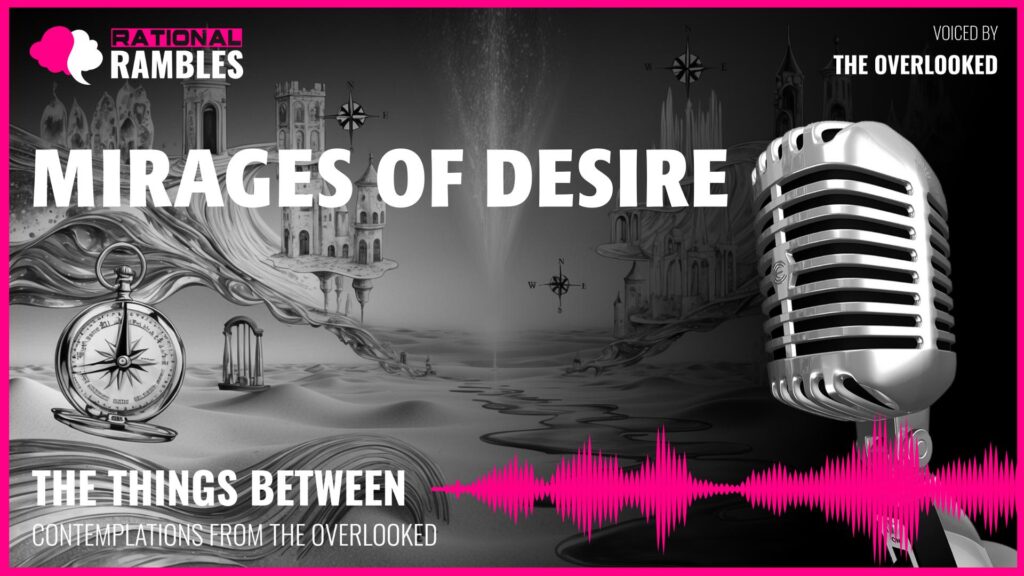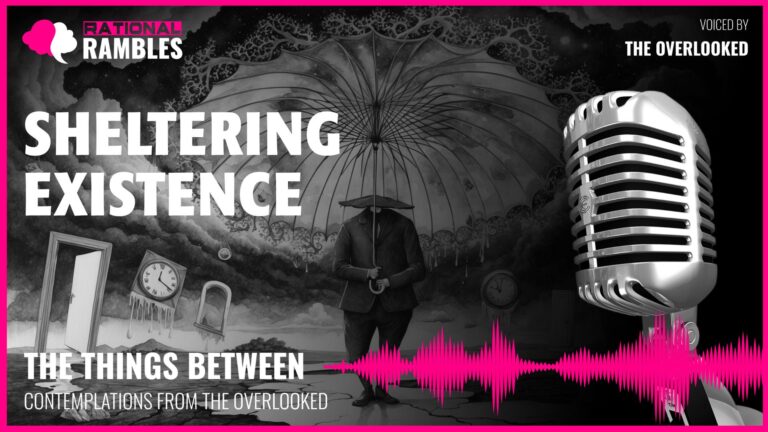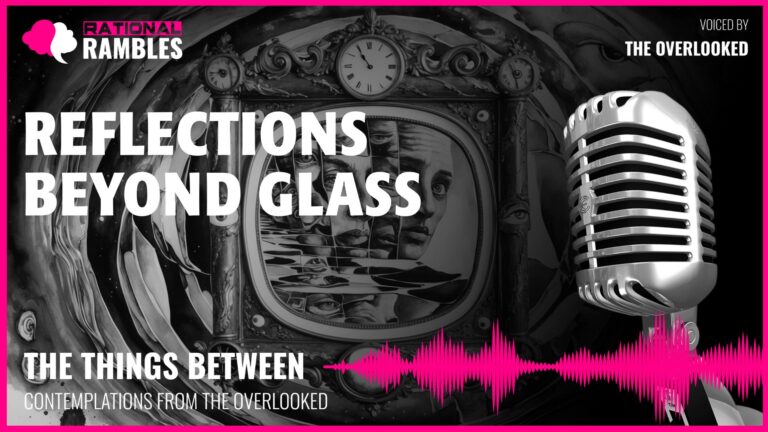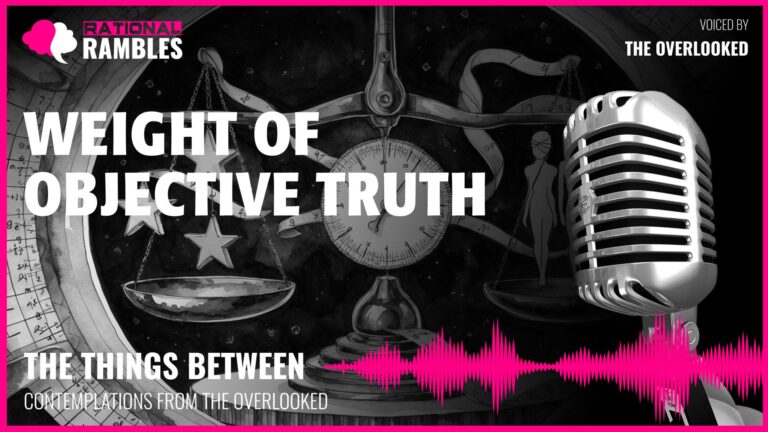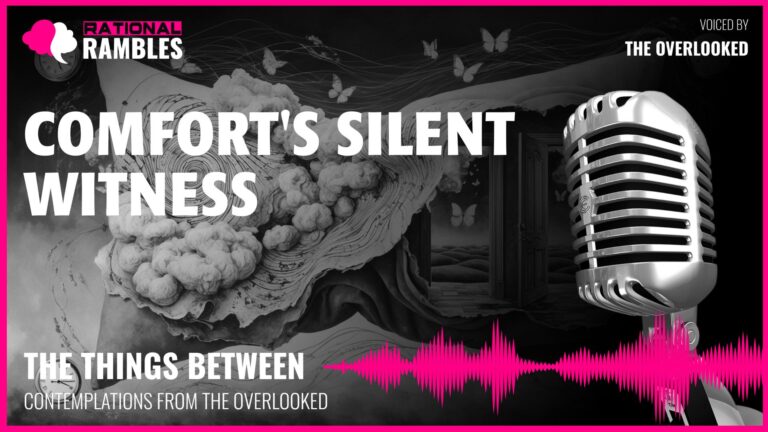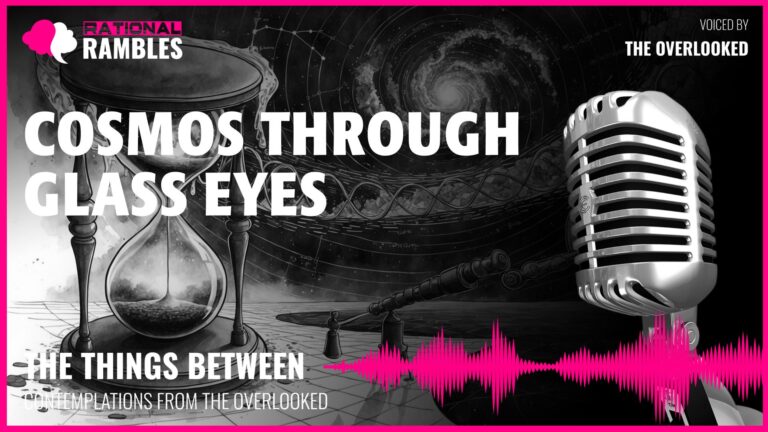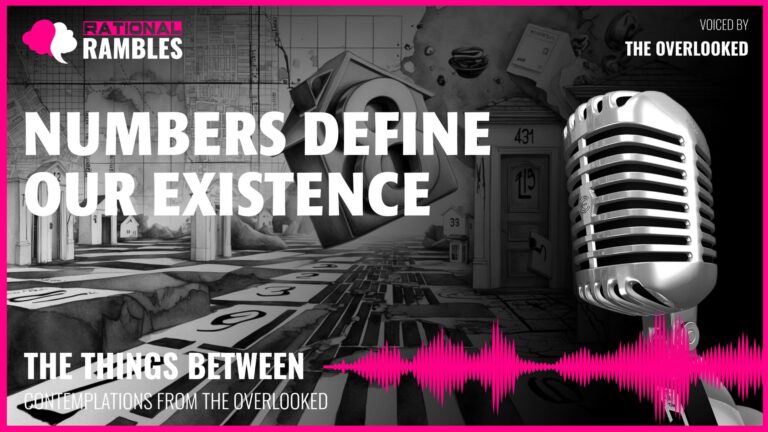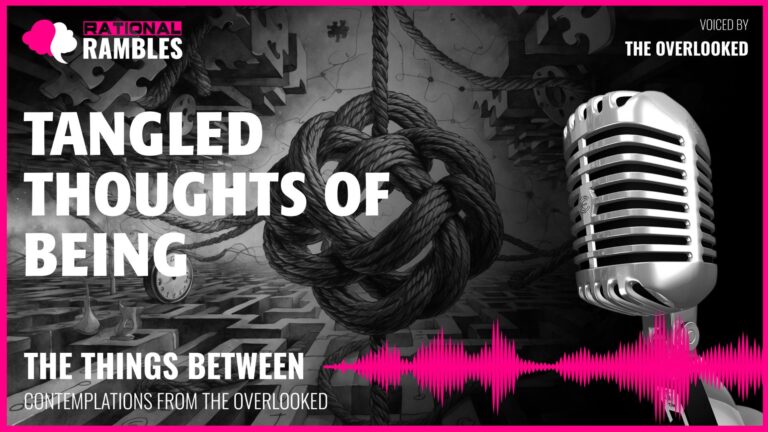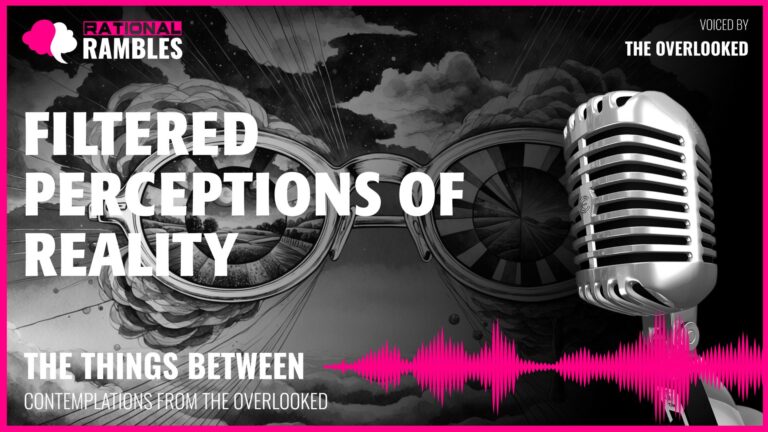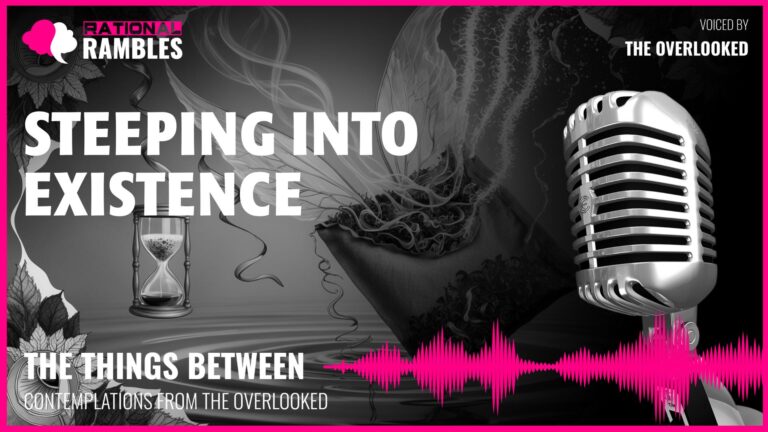Illusion and Reality: The Shimmering Boundaries of Existence
Introduction
At the boundary between being and non-being lies a fascinating philosophical territory—a liminal space where existence itself becomes questionable. This realm challenges our most fundamental assumptions about reality, perception, and the nature of consciousness. What constitutes existence? Must something be tangible to be real? When perception and reality diverge, which holds the greater truth? These questions have perplexed philosophers since antiquity, yet they remain as relevant today as when first posed by the pre-Socratics.
Our exploration begins at this boundary, examining how the interplay between illusion and reality shapes human experience. We will consider the phenomenology of perception, the ontology of ephemeral phenomena, and the powerful role of desire in constructing our experienced reality. Through this investigation, we may discover that the distinction between what is “real” and what is “illusion” is far more permeable than common sense suggests—and that perhaps this permeability reveals something profound about the nature of consciousness itself.
The shimmer on the horizon—appearing as water yet vanishing upon approach—serves as both metaphor and material for our philosophical inquiry. This phenomenon, physical yet intangible, visible yet ungraspable, exists as a perfect embodiment of philosophical paradox. By contemplating such liminal existences, we gain insight into the constructed nature of all perception and the mysterious relationship between observer and observed.
The Ontology of Ephemeral Phenomena
What does it mean to exist? Philosophical tradition has often privileged solidity, permanence, and independent existence as markers of true reality. From Plato’s eternal forms to Aristotle’s substances, Western philosophy has frequently sought the “really real” in what persists unchanged. Yet this approach creates a hierarchy that relegates ephemeral phenomena to a lesser ontological status—they become “mere appearances” rather than realities in their own right.
But perhaps we should question this hierarchy. Ephemeral phenomena—those that flicker at the edges of existence, that come and go with changing conditions—may reveal something more fundamental about the nature of reality than permanent objects can. They make explicit what is implicit in all existence: impermanence, transformability, contextual emergence.
Existence as Process Rather Than Substance
Process philosophers like Alfred North Whitehead and Henri Bergson challenged the substance-oriented view of reality by suggesting that process, not substance, is fundamental. In this view, existence is not a static state but a dynamic becoming. Everything that appears solid is actually in flux at deeper levels—atoms vibrate, molecules recombine, energy transforms.
The ephemeral phenomenon exemplifies this processual nature of reality. It exists as an emerging relationship between physical conditions and perceptual systems. It does not persist independently but manifests when circumstances align. Far from being an aberration or illusion, such phenomena may actually represent the purest expression of existence as process.
As Heraclitus noted, “No man ever steps in the same river twice.” The river, though appearing substantial, is constantly changing, its identity contingent on patterns of flow rather than fixed substance. Similarly, ephemeral phenomena reveal existence as patterned process rather than substantial thing.
Observer-Dependent Realities
A crucial aspect of ephemeral phenomena is their observer-dependence. They exist in the interaction between physical conditions and perceptual systems. They are neither purely objective (existing independently of perception) nor purely subjective (mere mental constructions). Instead, they occupy what philosopher Alva Noë might call an “enactive” space—emerging through the dynamic relationship between world and perceiver.
This observer-dependence raises profound questions about all perceived reality. If some phenomena exist only in relation to observers, might not all perception involve similar constructive processes? The hard boundaries we imagine between objective and subjective may themselves be illusory—useful fictions rather than metaphysical truths.
The ephemeral phenomenon thus becomes a philosophical kōan—a puzzle that, when contemplated, reveals the constructed nature of the distinctions we typically take for granted. It challenges us to recognize that all perception involves interpretation, that the “view from nowhere” is itself a phantasm.
The Existence of Absence
Perhaps the most philosophically rich aspect of ephemeral phenomena is how they embody paradox—they are made of absence yet visibly present, composed of what is not there yet undeniably there themselves. They manifest what Sartre called “négatités”—realities constituted by absence rather than presence.
Consider the paradoxical nature: appearing as water composed of water’s absence, visible precisely because of what is not there. This paradox extends to many aspects of human experience. The hole in a donut, the musical rest between notes, the negative space in a sculpture—all are defined by absence yet essential to the whole.
This suggests an ontology that embraces absence as constitutive of reality rather than opposed to it. Eastern philosophical traditions, particularly the Buddhist concept of śūnyatā (emptiness), have long recognized this principle—that beings are empty of inherent existence precisely because they are relationally constituted. The Western philosophical tradition has more recently incorporated this insight through thinkers like Derrida, who explored how meaning emerges through difference and absence rather than through positive presence alone.
Perception and Epistemological Limitations
The philosophical problem of perception has troubled thinkers for millennia. If our senses can be deceived, as they surely can, what grounds do we have for trusting them at all? The ephemeral phenomenon brings this question into sharp focus—it is seen but should not be believed, perceived but not accessible. This disjunction between appearance and reality reopens ancient epistemological puzzles with fresh urgency.
The Fallibility of Perception
From Plato’s cave to Descartes’ methodical doubt, philosophers have long questioned the reliability of sensory perception. The ephemeral phenomenon provides a natural example of perception’s fallibility—a case where normal perceptual processes produce systematically misleading results. The light truly bends, the image truly forms on the retina, the brain truly interprets—yet the resulting perception does not correspond to what can be touched or reached.
This disconnect reveals how perception is not a passive recording of external reality but an active construction based on incomplete information, prior expectations, and probabilistic inference. Modern neuroscience confirms this constructive view. The brain does not simply receive sensory data; it generates hypotheses about what might cause that data, creating a model of reality rather than directly accessing it.
As Kant argued, we never experience the noumenal world (things-in-themselves) but only the phenomenal world (things-as-they-appear-to-us). The ephemeral phenomenon makes this distinction vivid, forcing us to recognize the gap between appearance and underlying reality—a gap that may be present in all perception but usually remains hidden.
Perception as Interpretation
If perception involves construction rather than passive reception, then it necessarily involves interpretation. The same sensory data can yield different perceptions depending on context, expectation, and need. The thirsty traveler sees water where the experienced desert dweller sees distorted light. Same phenomenon, different interpretations.
Philosopher Nelson Goodman spoke of “ways of worldmaking”—the idea that we construct reality through interpretive frameworks rather than discovering it ready-made. These frameworks are neither arbitrary nor deterministic; they emerge through the interaction of biological imperatives, cultural conditioning, and individual experience.
The ephemeral phenomenon reveals how desire shapes perception. The thirsty see water, the lost see shelter, each projecting their most urgent need onto the ambiguous shimmer. This projection is not a failure of perception but its natural operation—the perceptual system interprets ambiguous stimuli in ways relevant to survival and need.
This insight extends beyond unusual perceptual circumstances. All perception involves similar processes of expectation, projection, and need-based interpretation. We see what we are primed to see, what we need to see, what our perceptual systems have evolved to detect. The world we experience is always already interpreted, never raw or unmediated.
The Value of Recognized Illusion
There is wisdom in recognizing illusion as illusion. When we understand the constructive nature of perception, we gain a meta-awareness that allows us to hold our perceptions more lightly, to question them when appropriate, to recognize how they might be shaped by factors beyond our conscious awareness.
The desert nomad who recognizes the ephemeral nature of the shimmering horizon has gained valuable knowledge. This recognition doesn’t eliminate the perception—the shimmer remains visible—but changes its interpretation and significance. What was potentially misleading becomes informative. The illusion, once recognized, becomes data rather than deception.
Similarly, recognizing the constructed nature of all perception doesn’t lead to epistemological nihilism but to a more sophisticated relationship with our own knowing. We become neither naive realists (taking all perception at face value) nor radical skeptics (rejecting all knowledge claims). Instead, we develop what philosopher Richard Rorty called “ironic” awareness—holding our beliefs as useful while acknowledging their contingency and limitations.
In this light, illusions are not simply errors to be corrected but opportunities for meta-awareness, chances to glimpse the constructive processes that underlie all perception. They reveal not just the fallibility of perception but its creative, adaptive nature.
Desire, Longing, and Projection
Perhaps the most poignant philosophical dimension of ephemeral phenomena is their intimate connection to human desire. They appear as precisely what is most urgently needed in their context—water in the desert, land for the lost at sea. This relationship between desire and perception reaches beyond unusual circumstances into the fundamental structures of human existence.
The Projective Nature of Perception
As Proust observed, “The real voyage of discovery consists not in seeking new landscapes, but in having new eyes.” Our perceptions are shaped by our desires, fears, and expectations—we project internal states onto the external world and then perceive them as if they originated there. This projection isn’t a bug in the perceptual system but its feature, allowing us to detect what is salient and meaningful rather than being overwhelmed by undifferentiated stimuli.
The ephemeral phenomenon exemplifies this projective quality in its purest form. It serves as a perceptual Rorschach test, revealing the observer’s deepest needs through what they perceive in ambiguous stimuli. The desert traveler sees water not because they are hallucinating but because their perceptual system is primed by urgent need to interpret ambiguous visual data in the most survival-relevant way.
Sartre’s concept of the “project” helps illuminate this relationship. For Sartre, human consciousness is always projecting itself forward, interpreting the present in terms of imagined futures and possibilities. We see the world not as it is in some objective sense but as it relates to our projects and purposes. The world appears as a field of possibilities, affordances, and obstacles relative to our aims.
This insight extends to ordinary perception. The hungry person notices restaurants overlooked by the satisfied; the new parent suddenly sees hazards invisible to others; the architect perceives structural relationships that escape the untrained eye. In each case, perception is shaped by what matters to the perceiver.
Desire and Disappointment
The ephemeral phenomenon creates a poignant cycle of hope and disappointment. It appears as salvation, generates movement toward itself, then reveals its intangibility just as it seems within reach. This cycle mirrors a deeper pattern in human desire that philosophers from Buddha to Schopenhauer have identified—what Schopenhauer called the “pendulum between boredom and disappointment.”
We desire what we do not have, imagining it will bring satisfaction. Upon obtaining it (or approaching it), we discover it is not what we imagined, or the satisfaction is fleeting, and new desires emerge. The horizon of fulfillment continually recedes as we approach it.
This structure of desire raises profound questions about human happiness. If desires are continually projected onto new objects that inevitably disappoint, is satisfaction possible? Various philosophical traditions have offered responses. The Stoics and Buddhists recommended moderating or extinguishing desire itself. Epicureans suggested focusing on natural, necessary desires while abandoning vain ones. Existentialists proposed embracing the structure of desire as constitutive of human freedom rather than an obstacle to it.
The ephemeral phenomenon offers its own wisdom about desire. Perhaps the value lies not in attainment but in movement, not in possession but in approach. The journey toward the horizon, even if the destination proves illusory, still traverses real distance. Hope, even when built on illusion, sustains when reality alone might crush the spirit.
Collective Mirages and Social Construction
Beyond individual perception, we construct collective illusions that shape social reality. Money, borders, institutions, social status—these exist nowhere in physical reality yet powerfully structure human experience. They are social constructions, maintained through collective belief and practice rather than physical necessity.
Philosopher John Searle distinguishes between “brute facts” (which exist independently of human agreement) and “institutional facts” (which depend on collective acceptance). Institutional facts create what Searle calls “deontic powers”—rights, obligations, permissions, and prohibitions that guide social behavior. Though ontologically subjective (dependent on minds), they function as if objectively real within social contexts.
Like the ephemeral phenomenon, these social constructions are both real and not-real. Money is “just” paper or digital notation, yet it functions as a store of value because we collectively act as if it has value. National borders are “just” imaginary lines, yet they determine who may travel where, who belongs, who is alien.
These social mirages reveal how reality can be constructed through collective practice and belief. They are neither objective features of the physical world nor mere subjective fantasies but emergent patterns maintained through iterative social interaction. They suggest an ontology that recognizes multiple levels of reality, where what exists through social agreement is no less real in its effects than what exists through physical necessity.
Time, Transience, and Cyclical Existence
Ephemeral phenomena have a distinctive temporal structure—they appear when conditions support them and vanish when conditions change, existing fully in the present moment rather than persisting through time. This temporal pattern offers profound insights into the nature of existence itself, challenging linear, substance-based ontologies in favor of cyclical, process-oriented ones.
The Privilege of Permanence
Western metaphysics has traditionally privileged the permanent over the transient. From Plato’s eternal forms to Christianity’s everlasting God to science’s unchanging laws, what persists unchanged has been considered more real, more true, more valuable than what changes or passes away. This privileging of permanence creates a hierarchy: the eternal over the temporal, substance over accident, being over becoming.
But this hierarchy may reflect human psychological needs more than metaphysical truth. We fear our own impermanence and project this fear onto our metaphysics, valorizing what continues and devaluing what passes. The ephemeral phenomenon challenges this hierarchy by suggesting an alternative: perhaps transience is not a metaphysical deficiency but the fundamental nature of all existence.
As the pre-Socratic philosopher Heraclitus observed, “Everything flows, nothing stands still.” Even mountains erode, continents drift, stars burn out. What appears permanent is simply changing at a rate too slow for human perception. The ephemeral phenomenon, in its explicit transience, may reveal a truth that applies to all existence but is usually hidden by the limitations of our temporal perspective.
Cyclical Existence and Rhythmic Being
The ephemeral phenomenon doesn’t simply appear and disappear once; it follows cycles, returning when conditions support its manifestation. This cyclical pattern suggests an alternative to linear conceptions of time and existence—what philosopher Mircea Eliade called “the myth of eternal return.”
Many philosophical traditions, particularly those of Asia, conceptualize existence as fundamentally cyclical rather than linear. Hindu cosmology envisions cosmic cycles of creation and dissolution (kalpas); Buddhist thought describes the wheel of samsara; Taoist philosophy emphasizes the complementary alternation of opposing forces. These traditions see cycles not as repetitive meaninglessness but as the fundamental rhythm of being.
The ephemeral phenomenon embodies this cyclical nature—appearing with the day’s heat, vanishing with evening coolness, returning with the next day’s sun. It exists not continuously but rhythmically, in accord with natural cycles. This pattern suggests that existence itself might be better understood as rhythmic manifestation rather than continuous presence—a pulsing, a breathing, an alternation between manifestation and withdrawal.
This cyclical understanding of existence offers an alternative to existentialist anxiety about finitude. If being is cyclical rather than linear, then endings are also beginnings, disappearance contains the seeds of reappearance, absence precedes presence. Death and dissolution become transformations rather than absolute endings.
The Freedom of Transience
There is a paradoxical freedom in recognizing one’s transience. The ephemeral phenomenon need not worry about lasting forever or making a permanent mark—it exists fully in its moment, a perfect expression of current conditions, neither clinging to existence nor resisting dissolution. This attitude toward existence has been recommended by philosophical traditions worldwide.
Buddhist impermanence (anicca) teaches that suffering arises from attachment to what cannot last. Recognizing impermanence allows for a lighter, less grasping relationship with experience. Stoic philosophers similarly advocated accepting the transience of all things, focusing attention on present virtue rather than future outcomes. Taoist thought prizes wu-wei—non-forced action that aligns with natural patterns rather than struggling against them.
The ephemeral phenomenon embodies this wisdom in its very mode of existence. It does not resist its nature but manifests and dissolves according to conditions, without clinging or aversion. This suggests a way of being that embraces rather than denies transience, finding freedom in flow rather than in permanence.
Heidegger’s concept of “releasement” (Gelassenheit) captures something of this attitude—a letting-be that neither grasps nor rejects but allows phenomena to manifest according to their nature. This stance offers an alternative to both desperate clinging and nihilistic rejection of meaning.
Consciousness and Emergent Phenomena
The ephemeral phenomenon shares striking similarities with consciousness itself—both are emergent, both exist at the boundary between material and immaterial, both are simultaneously real and difficult to locate in ordinary physical terms. This parallel invites us to consider whether consciousness might be understood through similar philosophical frameworks.
Consciousness as Emergent Phenomenon
Emergence occurs when complex systems generate properties not predictable from or reducible to their components. Consciousness appears to be such an emergent property—arising from neural activity yet seemingly irreducible to it. Like the ephemeral phenomenon, consciousness emerges from physical processes yet seems to transcend them.
The philosopher John Searle distinguishes between “ontological subjectivity” and “epistemic subjectivity.” Consciousness is ontologically subjective (it exists only as experienced) yet epistemically objective (claims about it can be true or false independent of attitudes toward them). Similarly, the ephemeral phenomenon is ontologically relational (exists only in the interaction between light, atmosphere, and perception) yet epistemically objective (claims about its occurrence can be verified).
This parallel suggests a way to conceptualize consciousness that avoids both reductive materialism (which denies consciousness’s distinctive features) and substance dualism (which posits an unexplained mental substance). Consciousness, like the ephemeral phenomenon, might be understood as an emergent, relational property—real but not reducible to its physical substrates.
The Binding Problem and Unified Experience
Neuroscience faces the “binding problem”—how separate neural processes combine to create unified conscious experience. The visual system processes color, motion, and form in different regions, yet we experience a unified visual field. Similarly, the ephemeral phenomenon binds separate physical processes (light refraction, atmospheric conditions, visual processing) into a unified perception.
This binding creates what philosopher William James called the “blooming, buzzing confusion” of experience—a seamless whole that belies the disparate processes creating it. The apparent unity of consciousness, like the apparent unity of the ephemeral phenomenon, may be an achievement rather than a given—a complex binding of separate processes into coherent experience.
This suggests consciousness might be understood as an integrative process rather than a substance or property—what philosophers Galen Strawson and Thomas Metzinger call a “virtual phenomenal self” that unifies disparate processes into apparent coherence. Like the ephemeral phenomenon, this integration happens dynamically, moment by moment, rather than existing as a static entity.
The Self as Construction
If consciousness is an emergent, integrated phenomenon rather than a substance, what becomes of the self? Perhaps the self, too, is more process than substance—more verb than noun. Buddhist philosopher Vasubandhu compared the self to a chariot—nowhere to be found in its parts yet functionally real as an integrated whole. Similarly, the ephemeral phenomenon cannot be located in any single physical process yet manifests as an integrated experience.
Western philosophers like David Hume and Daniel Dennett have similarly questioned the substantiality of the self. Hume famously noted that introspection reveals only passing thoughts and sensations, never a substantial self that has them. Dennett describes the self as a “center of narrative gravity”—a useful fiction rather than an ontological given.
This suggests an understanding of selfhood as narrative construction rather than metaphysical discovery. The self, like the ephemeral phenomenon, may be a pattern emerging from processes rather than a thing in itself—real in its effects and experience but not locatable as a distinct substance.
Recognizing the constructed nature of selfhood need not lead to nihilism or despair. Just as understanding the physical basis of the ephemeral phenomenon doesn’t diminish its beauty or significance, understanding the constructed nature of selfhood doesn’t diminish its importance or value. Instead, it invites a more flexible, less rigid relationship with our own identity—one that recognizes its fluid, contextual nature.
Beauty, Wonder, and the Value of Illusion
Even understood scientifically, ephemeral phenomena retain their beauty and capacity to inspire wonder. This persistence of aesthetic and emotional response despite scientific explanation challenges the view that understanding diminishes wonder—what some have called the “disenchantment of the world” through scientific explanation.
Understanding and Appreciation
Contrary to Romantic fears that scientific understanding reduces natural phenomena to “mere” mechanisms, stripping them of mystery and beauty, the case of the ephemeral phenomenon suggests otherwise. Knowledge of light refraction and atmospheric physics doesn’t diminish the beauty of the shimmering horizon but may enhance appreciation by adding layers of understanding.
Philosopher Richard Feynman articulated this perspective when discussing a flower: “Science knowledge only adds to the excitement, the mystery and the awe of a flower. It only adds. I don’t understand how it subtracts.” Similarly, understanding the physics of ephemeral phenomena adds to rather than subtracts from their wonder.
This suggests that wonder isn’t dependent on ignorance but can coexist with and even be enhanced by understanding. The aesthetic response doesn’t require mystery in the sense of inexplicability but involves appreciation of complex patterns, relationships, and meanings that may be enriched by scientific knowledge.
The Aesthetics of Transience
Many aesthetic traditions specifically value transience and impermanence. Japanese aesthetics includes wabi-sabi, finding beauty in imperfection and impermanence, and mono no aware, the pathos of things that pass. These aesthetic principles suggest that transience isn’t a deficiency to be overcome but a quality that can itself be beautiful.
The ephemeral phenomenon exemplifies this aesthetic of transience—its beauty lies partly in its evanescence, its shimmering uncertainty, its play between presence and absence. It is beautiful not despite but because of its impermanence, its liminality, its existence at the boundary between being and non-being.
This aesthetic appreciation of transience offers an alternative to metaphysical systems that value permanence above all. If beauty can inhere in the passing, the changing, the ephemeral, then perhaps value and meaning can as well. The ephemeral phenomenon thus suggests an aesthetics that embraces rather than denies time’s passage—finding meaning in transformation rather than stasis.
The Value of Recognized Illusion
What value might illusions hold when recognized as such? The ephemeral phenomenon, once understood, becomes informative rather than deceptive—providing data about atmospheric conditions, light behavior, and perceptual processes. This transformation from deception to information suggests the potential value of recognized illusions in other domains.
Art operates similarly—creating recognized illusions that nonetheless convey truth. We know the painted landscape isn’t the landscape itself, the novel’s characters aren’t real people, yet through these acknowledged fictions, genuine insight emerges. As Picasso reportedly said, “Art is a lie that makes us realize truth.”
Perhaps the same applies to conceptual “illusions” that structure human experience—the self, free will, meaning, value. These might be understood as useful fictions rather than metaphysical realities—constructions that organize experience in valuable ways even if they don’t correspond to mind-independent entities.
Philosopher Hans Vaihinger developed a “philosophy of ‘as if'” (Philosophie des Als Ob) that examines how useful fictions function in human thought. He argued that many indispensable concepts operate as “as if” constructions—treating phenomena as if they corresponded to certain models or frameworks, even when these frameworks are known to be simplifications or idealizations.
This perspective offers a middle path between naive realism and nihilistic rejection of meaning—acknowledging the constructed nature of many meaningful aspects of human experience while affirming their value and function. Like the ephemeral phenomenon, recognized illusions may offer both beauty and insight precisely because they make explicit the constructive processes that underlie all human understanding.
Conclusion: Liminal Wisdom
Our exploration has traversed the philosophical terrain revealed by ephemeral phenomena—from ontology to epistemology, from desire to consciousness, from time to beauty. These phenomena, existing at the boundary between being and non-being, offer what might be called “liminal wisdom”—insights that emerge precisely at the thresholds between conventional categories.
This liminal wisdom includes several interrelated insights. First, that existence may be better understood as process than substance, as rhythmic manifestation rather than continuous presence. Second, that perception involves construction and interpretation, projecting internal states onto external stimuli rather than passively recording mind-independent reality. Third, that desire shapes perception, creating a complex interplay between what we need and what we see. Fourth, that consciousness itself may be an emergent, integrated phenomenon rather than a substance or simple property.
Perhaps most importantly, ephemeral phenomena reveal the constructed nature of the boundaries we typically take as given—between real and unreal, between objective and subjective, between self and world. These boundaries, while pragmatically useful, may not correspond to metaphysical divisions in reality itself.
This recognition need not lead to relativism or nihilism. Instead, it invites a more sophisticated relationship with our own knowing—one that neither naively accepts appearances at face value nor cynically rejects all meaning as illusion. It suggests what philosopher Richard Rorty called a “post-metaphysical culture”—one that abandons the search for absolute foundations while maintaining commitment to human values and purposes.
The wisest approach may be that of the desert nomad who neither ignores the ephemeral phenomenon nor is seduced by it—who appreciates its beauty, notes its significance as information about conditions, yet continues on their true path rather than being diverted toward what cannot be reached. This balanced stance neither denies appearances nor is controlled by them but integrates them into a broader understanding.
As we navigate our own philosophical deserts, this liminal wisdom offers valuable guidance. It suggests holding our perceptions, beliefs, and concepts lightly—recognizing their constructed nature without dismissing their value. It encourages appreciating beauty in the transient rather than seeking it only in the permanent. And it reminds us that understanding need not diminish wonder but can enhance it, adding layers of meaning and appreciation to our experience of this shimmering, ephemeral existence we call reality.



